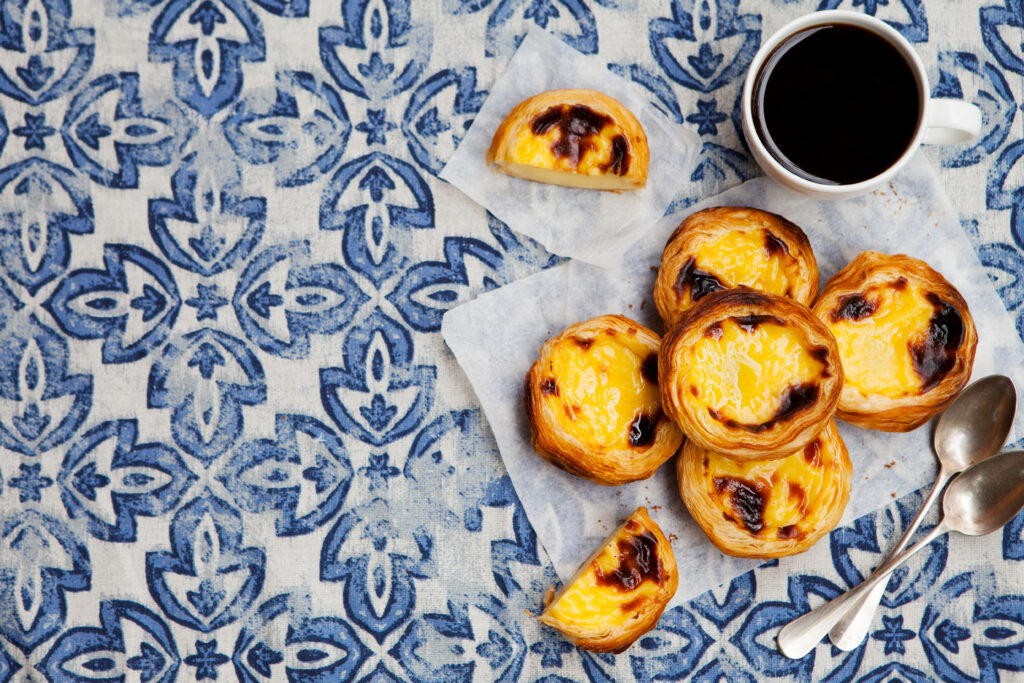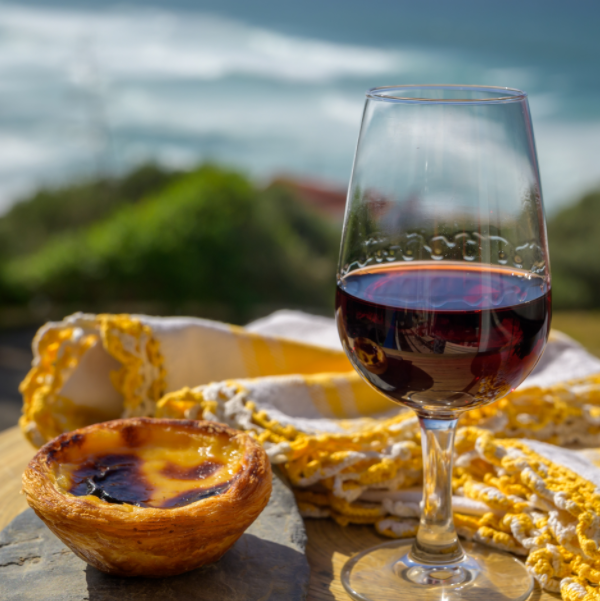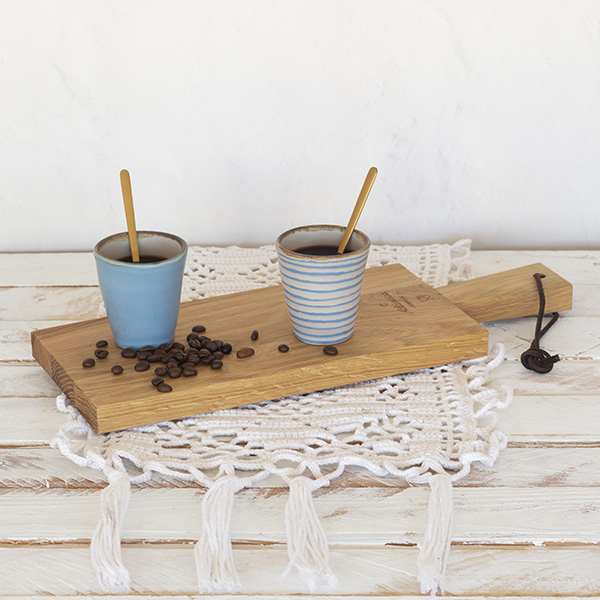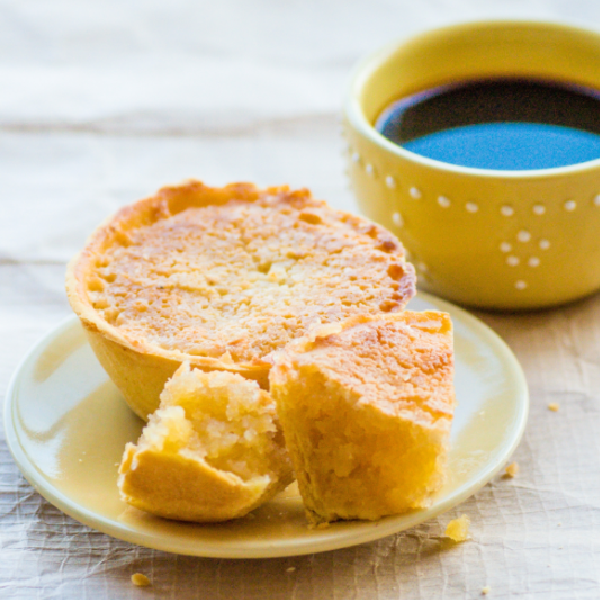Portugal is a country rich in traditions and one of the most popular is its traditional sweets. Each Portuguese sweet tells a story, reflects the culture and soul of the people, and offers a unique gastronomic experience.
In this article, we’ll explore some of the most popular Portuguese sweets and delve into their history and cultural importance.
We warn you that there’s a good chance that, by the end of this article, your mouth will be watering.
But if you don’t have any sweets to hand, that’s not a problem: you can get to work and enjoy the recipe we’ve brought you.
Ready to embark on this journey?
Pastéis de nata
Pastéis de nata (custard tarts), or pastéis de Belém when made according to the original recipe, are perhaps the most internationally famous Portuguese sweet. Created by the monks of the Jerónimos Monastery at the beginning of the 19th century, these portuguese custard tarts are a symbol of Lisbon and a true emblem of Portuguese pastry, capable of delighting any tourist or local.
Perfect with an espresso, pastéis de nata also go wonderfully with a glass of Port wine to further enhance their richness and flavor.
Bolo de arroz
Bolo de arroz (rice cake) is another classic in Portuguese pastry shops. Cylindrical in shape and sprinkled with sugar, it is made with rice flour, which gives it a unique, light texture.
It’s so popular for breakfasts and snacks that it doesn’t matter where you are in the country; just walk into a café and we guarantee you’ll find someone enjoying a rice cake with the typical “galão”.
And what to drink with it?
That’s the beauty of this cake: from natural fruit juices to black tea or even American coffee, the options are endless – and delicious.
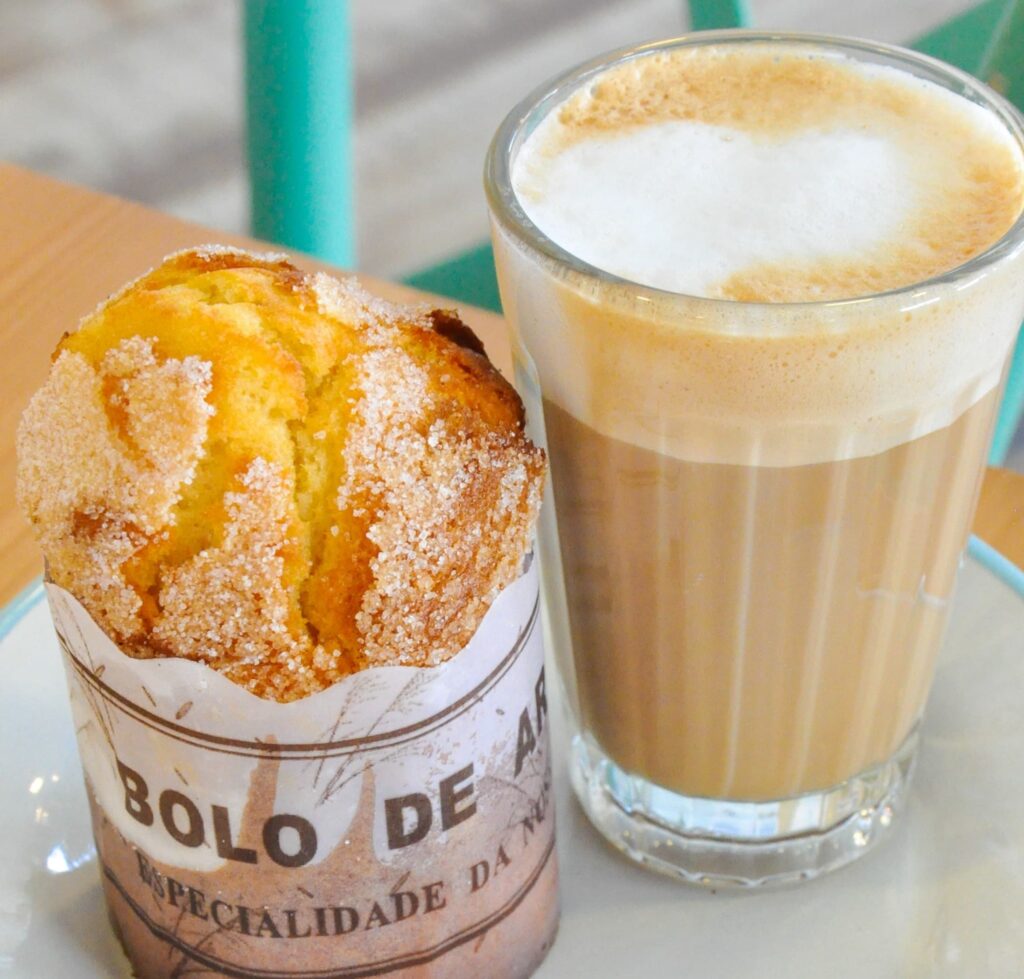
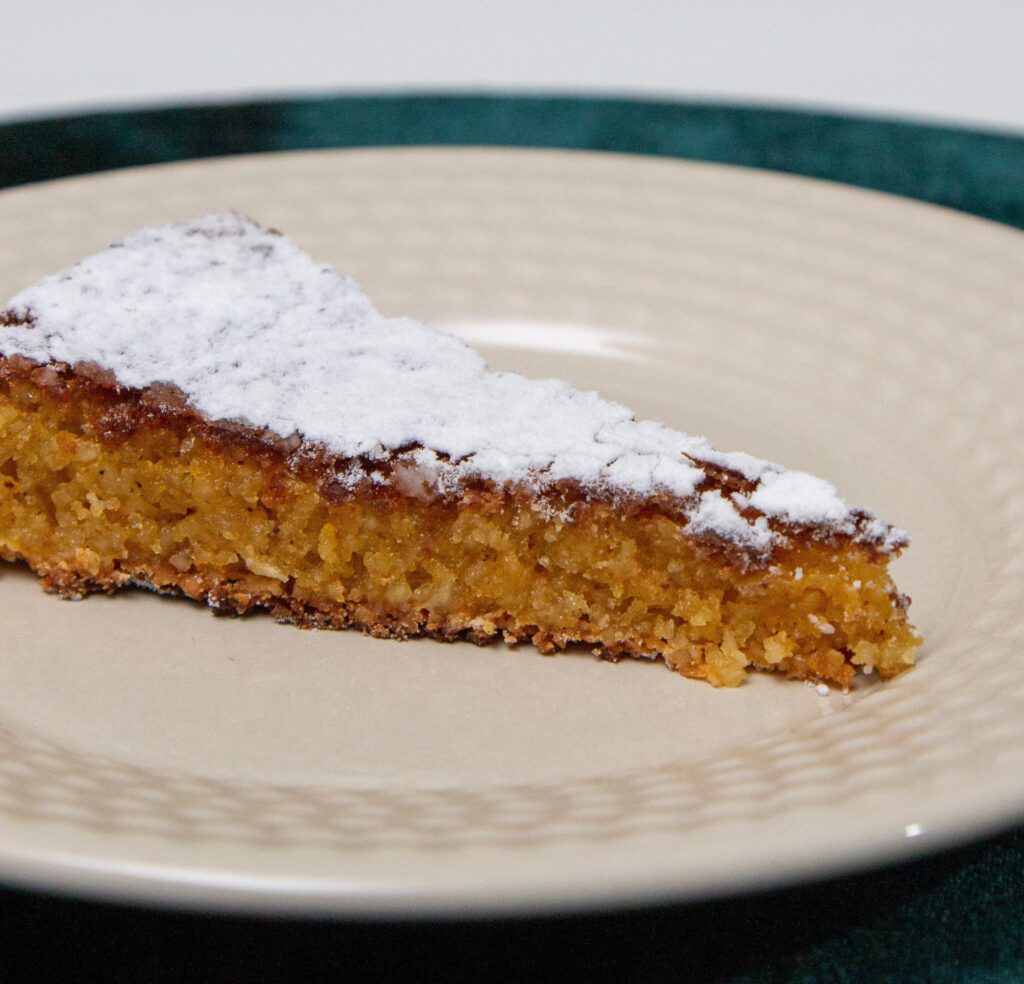
Toucinho do Céu
This is a convent sweet that dates back to the 18th century. Originating from the Santa Clara Convent in Guimarães, toucinho do céu (bacon of heaven) is made with almonds, egg yolks and sugar, which results in a dense texture and a remarkable flavor. Its curious name is due to the fact that it originally included lard in the recipe.
This portuguese dessert goes exceptionally well with a muscatel wine, whose sweetness complements its richness. Another excellent option is a glass of bitter almond liqueur.
Bola de Berlim
There’s nothing that transports us more to warm days by the sea than the bolas de berlim (Berliner doughnuts). Although it originated in Germany, it has been adapted and has become one of Portugal’s most beloved sweets. This fried dough, filled with pastry cream and sprinkled with sugar, is a common sight on Portuguese beaches and pastry shops. It’s a sweet that evokes childhood memories and summer days by the sea.


Queijadas
Queijadas (cheese tarts) are a traditional Portuguese sweet dating back to the 13th century, especially popular in the town of Sintra. Made with fresh cheese, sugar, eggs and cinnamon, queijadas have a dense texture and a distinctive flavor that makes them irresistible, impossible to eat just one.
To accompany the queijadas, we suggest a green tea or a white Port wine, which complement the sweet taste and rich texture of this sweet wonderfully.
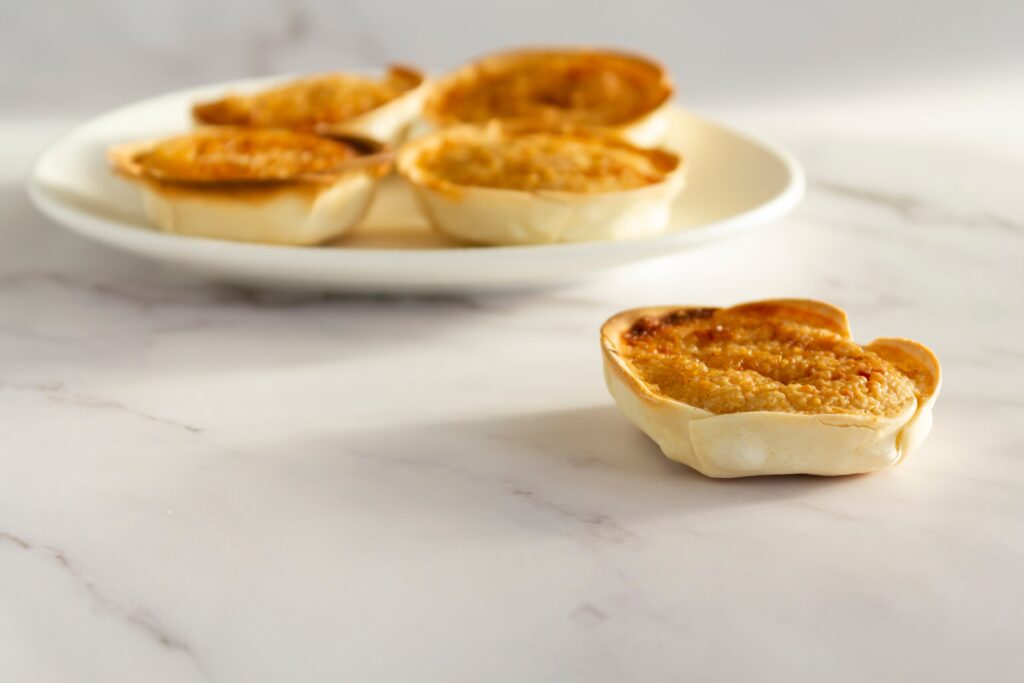
Pastel de Feijão
Pastel de feijão (bean pastry) is a specialty from the Torres Vedras region, made with white beans, sugar and almonds. This peculiar combination of ingredients results in a soft and delicate sweet, appreciated by many for its originality and unique taste.
Pastel de feijão goes well with chamomile tea or a simple coffee, the flavors of which enhance the subtlety of the sweet.
How about a leite creme? Check out this practical recipe
Leite creme (custard) is a simple and practical sweet often found in many Portuguese homes. Its crunchy burnt sugar surface and creamy interior are a real delight. If your mouth is watering after reading about so many traditional sweets, here’s a simple and practical leite creme recipe to “kill the craving”.
Ingredients
- 1 liter of milk;
- 6 egg yolks;
- 200g of sugar;
- 40g of flour;
- 1 lemon peel;
- 1 cinnamon stick;
- Sugar to taste for burning.
How to prepare
- Mix the egg yolks with the sugar and flour until smooth;
- Boil the milk with the lemon zest and cinnamon stick;
- Remove the lemon zest and cinnamon stick and gradually add the milk to the egg yolk mixture, stirring constantly;
- Bring to a simmer, stirring continuously until it thickens;
- Pour the custard into individual bowls and leave to cool;
- Before serving, sprinkle with sugar and burn the surface with a hot iron or blowtorch.
To accompany it, you can help yourself to a sweet white wine or a cup of jasmine tea.
A elegância da cerâmica portuguesa
A apresentação de qualquer sobremesa portuguesa ganha um toque especial quando servida em louças bonitas e bem trabalhadas. A cerâmica portuguesa da Companhia Atlântica, com os seus pratos e travessas elegantes, transformam uma simples refeição num evento memorável.
Apostar em louças de qualidade é realçar o cuidado e o amor postos em cada detalhe da refeição. Então, de que esperas?

